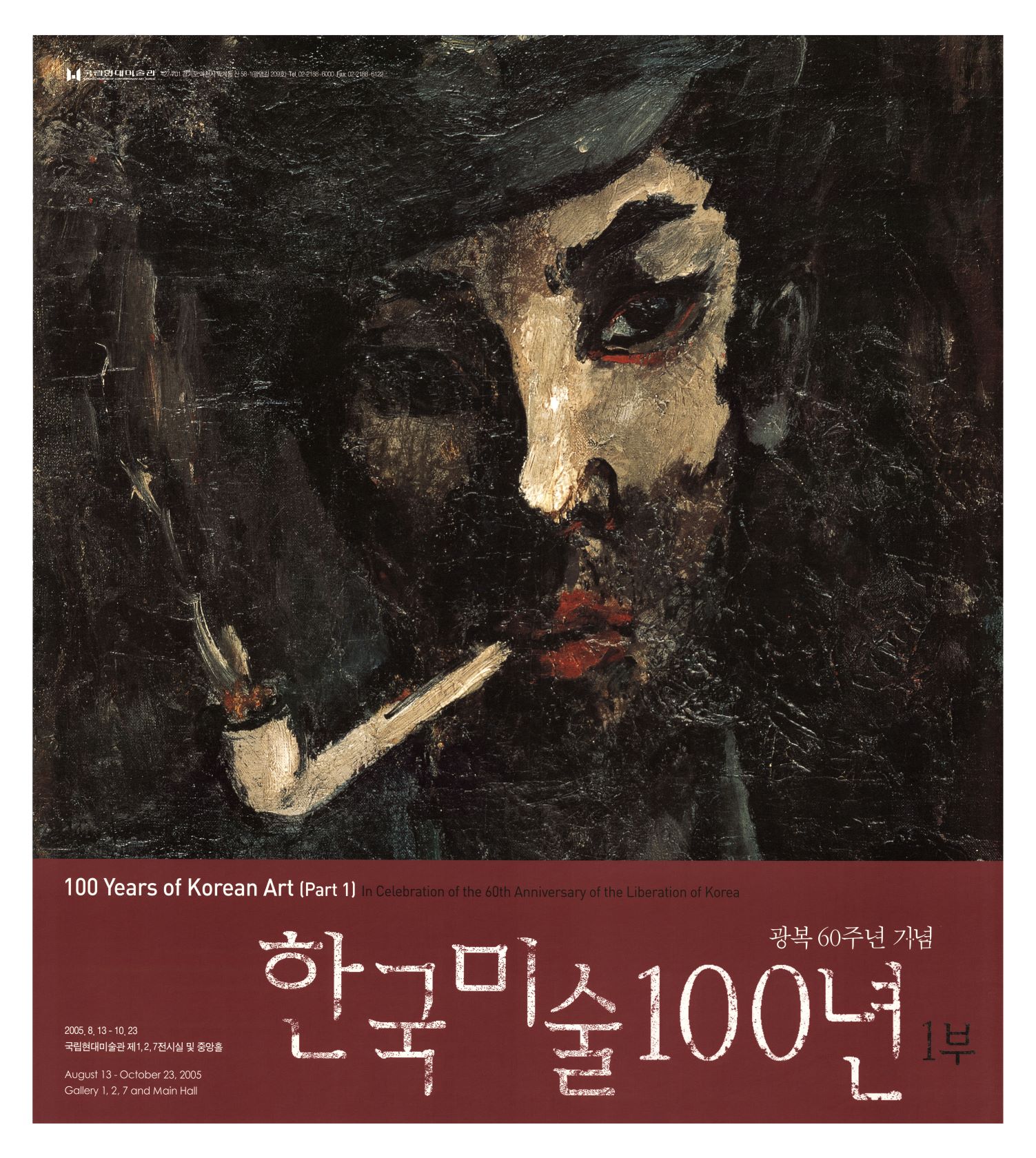
100 years of Korean art Part 1, In Celebration of the 60th Anniversary of the Liberation of Korea, Poster, 2005, MMCA Art Research Center Collection
100 years of Korean art
* Source: MMCA
Related
-
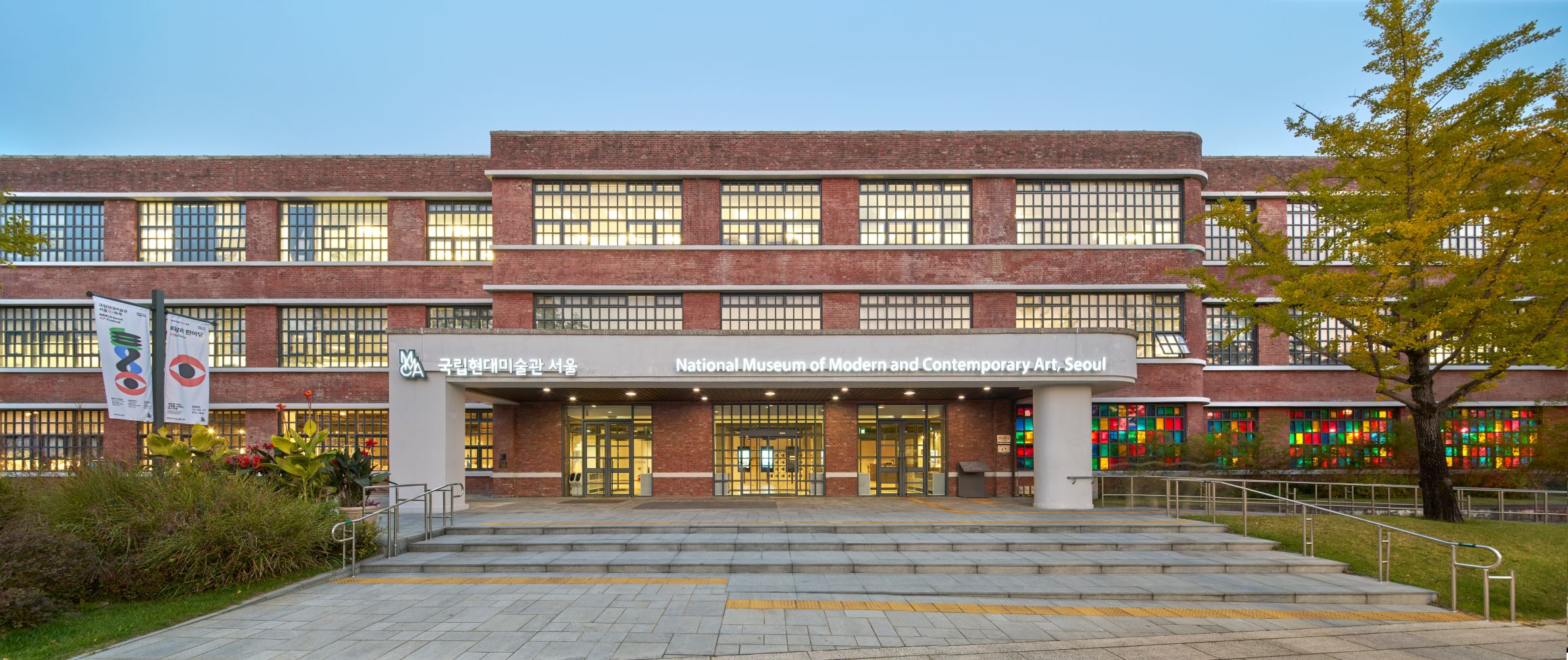
National Museum of Modern and Contemporary Art, Korea (MMCA)
A national museum established in 1969 that researches, collects, and exhibits modern and contemporary art. As of 2018, there are branches in Gwacheon, Deoksugung, Seoul, and Cheongju. When first established, the National Museum of Modern Art (now MMCA) was located within Gyeongbokgung palace. In 1973, the museum moved to the East Wing of the Deoksugung Seokjojeon building. Then, in 1986, the museum moved to its current location in Gwacheon, to occupy a new building equipped with an outdoor sculpture exhibition space, and has since opened a new chapter in Korean art. The perceived need for a space to focus specifically on Korean contemporary art led to the establishment of further site, the National Museum of Contemporary Art, Deoksugung in 1998. In November 2013, a further demand for contemporary art exhibitions led to the establishment of another Seoul branch being created in the Defense Security Command building in Sogyeok-dong, Jongno-gu, which has since its inception engaged in multifaceted exhibitions of both domestic and overseas contemporary art. Also, as a further component of the MMCA complex, a disused tobacco factory in Cheongju was remodeled to provide a home to the National Art Storage Center.
-
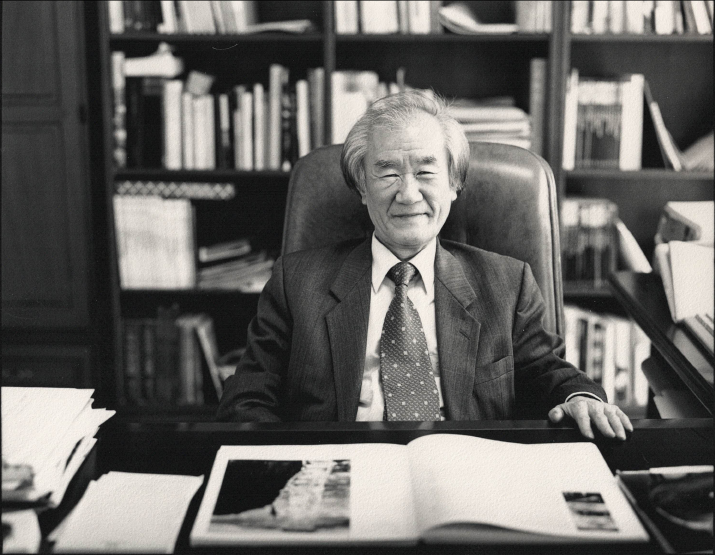
Kim Yoon-Soo
Kim Yoon-Soo (1936-2018) belongs to the first generation of Korean art critics. In the 1970s when his contemporaries centered their criticism on modernist art, he gave a critical voice to Korean modernity from the perspective of realist aesthetics. In the 1980s, he began to actively engage himself in criticism while aligning himself with Minjung artists. Born in Yeongil, Gyeongsangbuk-do Province in 1936, Kim Yoon-Soo graduated from the Department of Aesthetics in the College of Humanities at Seoul National University and from the same graduate school. In 1969, Kim participated in the formation of the Reality Group [Hyeonsil dongin]. Following “Art and Alienation” in Changjak gwa bipyeong (Creation and Criticism) in the spring of 1971, he published articles on Korean modern and contemporary artists, such as Ko Huidong, Lee Jungseop, Park Sookeun, Kim Whanki, and Oh Chiho. In 1975, he published his only book, Hanguk hyeongdae hoehwasa (The History of Korean Contemporary Painting; Hanguk Ilbo newspaper company). In the 1980s, he presented his critical writings that supported new figurative artists mainly in Gyegan misool (Art Quarterly), serving as a spiritual anchor for Minjung art movement. After his death, Kim Yoon-Soo jeojakjip (Collected Writings by Kim Yoon-Soo) (Changbi, 2019), a collection of his writings, was published. In addition to criticism, Kim wrote Geundae hoehwa sosa (A Short History of Modern Painting) (Iljisa, 1972) and translated several publications, including Bauhaus (Mijinsa, 1978), Geojangdeurui jahwasang (Self-Portraits of Masters) (Jiinsa, 1978), Hyeongdae misurui wolli (The Philosophy of Modern Art) (Youlhwadang, 1981), Pikasoui seonggonggwa silpae (The Success and Failure of Picasso) (Mijinsa, 1984), and Hyeondae misulsaron (Modern Art: Nineteenth and Twentieth Centuries) (Kkachi, 1989). He was an art educator and worked as the head or director of major art organizations and art museums. For example, he served as a professor at Ewha Womans University (1973–1976) and Yeungnam University (1980–1981), a publisher of Changjakgwa bipyeong, the president of Changbi Publishers (1983–1988), the director of the Seoul Museum (1981–1982), the board chairman of the Korean People's Artist Federation (2000–2008), and the director of the MMCA (2003–2008).
Find More
-
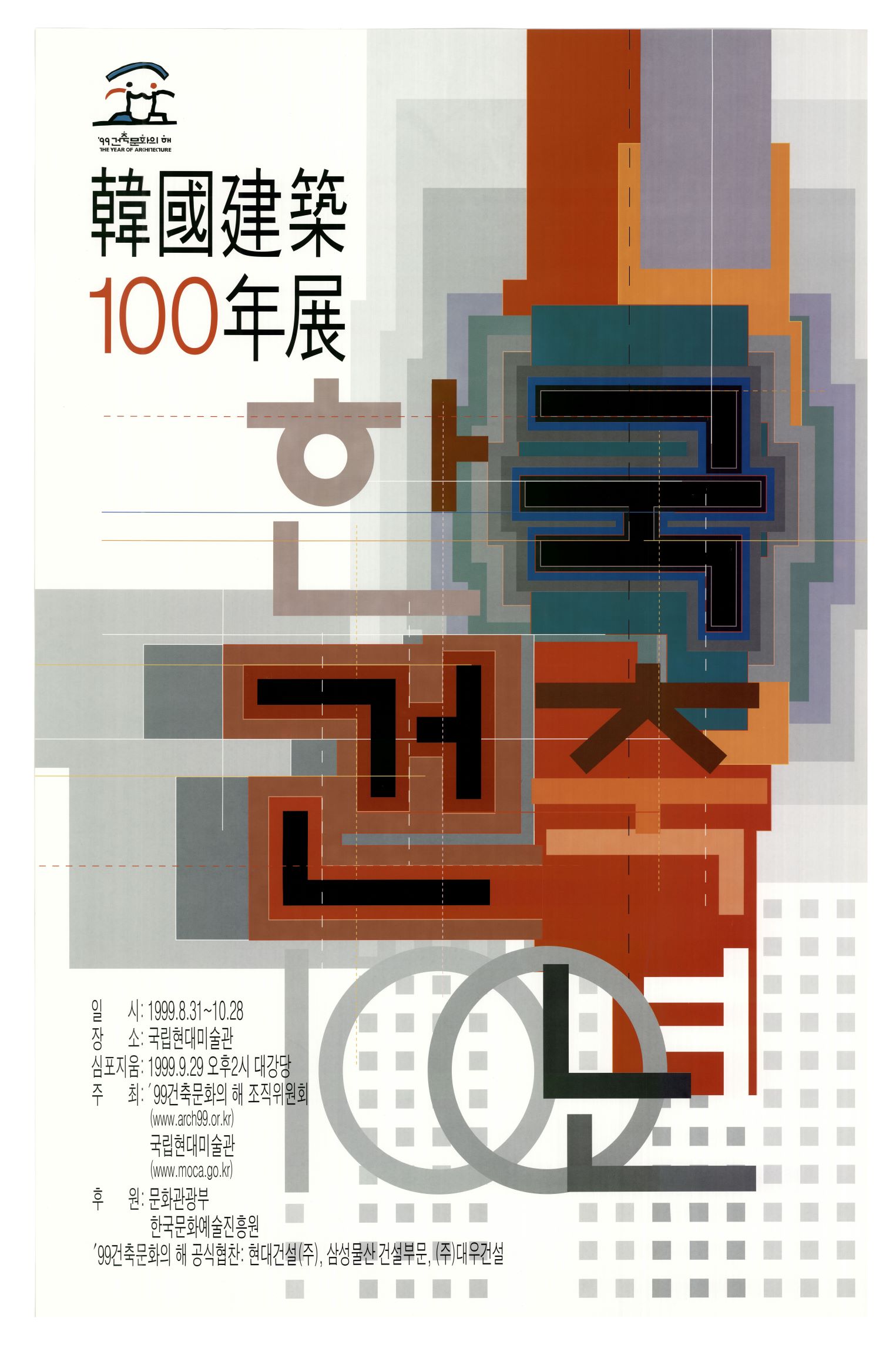
100 Years, Architecture of Korea
100 Years, Architecture of Korea was a special exhibition on the theme of modern and contemporary Korean architecture held at the National Museum of Contemporary Art, Korea (now MMCA) from August 31 to October 28 in 1999 under the auspices of the '99 Year of Architecture Organizing Committee. A total of 189 architects and architectural scholars participated in the exhibition, and over 350 works including blueprints, maps, architectural books, and archival photographs were exhibited, organized into three parts and twelve themes. Part 1, “The Involuntary Introduction of Western Culture and the Transformation of Korean Architecture,” consisted of five subtopics and the archival collection of architectural firms. The five topics included (1) The Impact of Modernization, (2) Heteronomous Modernization, (3) Autonomous Modernization, (4) Modernization of the Architectural World and Architectural Education, (5) Liberation and Architecture. With the opening of ports, efforts to actively adopt and establish Western architectural styles and systems, as well as efforts to receive modern architecture while rooted in traditional culture, were demonstrated in Part 1 through 35 works and models such as Chungdong Church, the rotary in front of the Bank of Korea, Hwashin Department Store, and the Gyeongseong Industrial Promotion Hall. Part 2 was composed under the theme of “The Pursuit of Fundamental Values of Architecture,” and had subtopics such as the Pursuit of Modernity, Exploration of Identity and Regionalism, Transformation of Housing Due to Urbanization, Pursuit of Rationality (Architecture as Making), Expression of Architectural Aesthetics, Exploration of Technological Aesthetics, Architectural Urban Context, Exploration of Architectural Space, and Internalization and Architecture. Covering the achievements of Korean architecture from the mid-1950s to the present, Part 2 examined the application of Western concepts of modernity and the movement of research on traditional Korean forms as modernization progressed after the Korean War. Furthermore, it presented the flow of Korean architectural history, focusing on the exploration of Korean traditional identity, urbanization and housing changes, and the diversification and internationalization of architecture, centered around the era of urbanization coinciding with the Seoul Olympics in 1988. Part 3 was titled “A New Way of Thinking for the Future" structured around the subthemes “Phenomena and Perception: Perception and Exploration of the New Era I” and “Reflection and Alternatives: Perception and Exploration of the New Era II.” The aim of Part 3 was to envision the future of Korean architecture by presenting models from emerging architects, who explore current and future issues through architectural knowledge and imagination, while inviting viewers to contemplate the future of Korean architecture. The exhibition utilized visual materials such as panels, models, slides, and videos to make architecture, which may be difficult for the public to understand, more accessible. In addition, time was set aside for conversations between the artists (architects) and visitors on weekend. Furthermore, a large-scale timeline measuring 22 meters was also on display, analyzing global architectural history, the current situation of Korean architecture, and contemporary Korean architectural structures. This attempt aimed to provide a comprehensive overview of modern Korean architectural history.
-
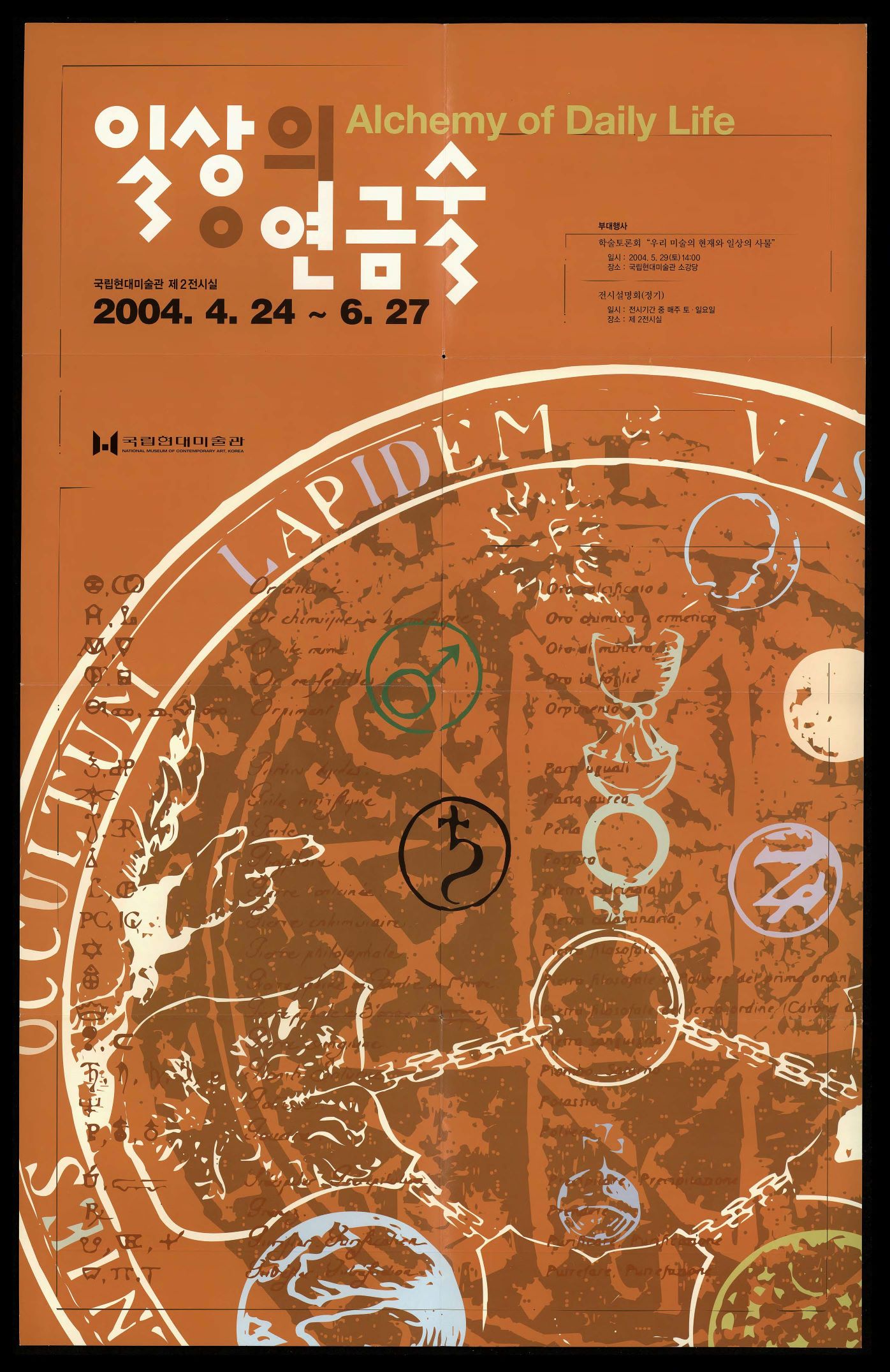
Alchemy of Daily Life
Alchemy of Daily Life was an exhibition held from April 24 to June 27 in 2004 in Gallery 2 of the National Museum of Contemporary Art, Korea (now MMCA). In the exhibition's preface, Kim Kyung-woon, the curator of the exhibition at the MMCA, said that "alchemy" is the process by which ordinary objects become extraordinary works of art through the imagination of artists, a concept that has captivated masters of modern art like Marcel Duchamp and Joseph Beuys. Also due to a change in how everyday objects are utilized as we transition from an industrial society to an information society, Kim opens up the possibility of interpreting efforts by artists, who sought to challenge the authority entrenched in false consciousness and raise objections against the status of high art, in relation to the social landscape of Korea. A total of twenty-three artists participated in the exhibition, including Kim Beom, Park Gye-hoon, Park Buldong, Ahn Kyuchul, Ahn Yun-Mo, Lee Jaehyo, Joo Jaehwan, Choi Jeonghwa, Ham Jin, Choi Jung-hyun, Kim Hongju, Kim Soojin, Kwon Youngwoo, Cho Sungmook, Chung Kyungyeun, Noh Sangkyoon, Lee In-Hee, Kim Siha, Kwon Jaehong, Lee Dongwook, Cho Byungwang, Choi Doosu, and Jeong Soyoun. As a side event, the academic discussion "The Present and Everyday Objects of Korean Art" was held on May 29 at the Small Auditorium of the MMCA. The exhibition was hosted by the MMCA, organized by the Christchurch Art Gallery Te Puna o Waiwhetū, New Zealand, and supported by the Korea Foundation. It was held from November 18, 2005 to February 26, 2006 at the Christchurch Art Gallery Touring Exhibition Room and the Borg Henry Exhibition Room. It was the first exhibition of Korean contemporary art to be presented in New Zealand.






